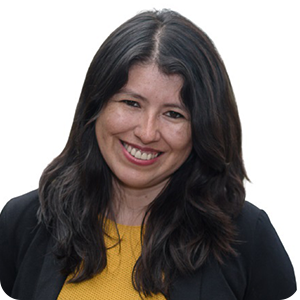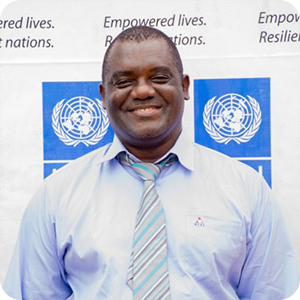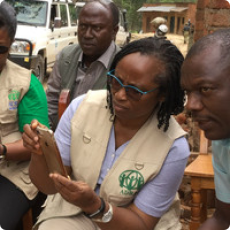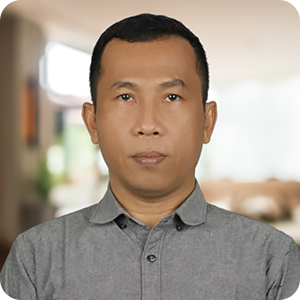Nearly 20 natural disasters happen every day in the world which amounts to a staggering 6,800 events a year. Flooding, storms, earthquakes, wildfires, and tornadoes make the front pages in the majority of cases, but these are just a few of many. Today, on October 13th, we celebrate the International Day for Disaster Risk Reduction which is an opportunity to recognize the progress made to prevent and reduce the risk of disasters and the loss of lives, livelihoods, and the damage to economies and basic infrastructure and is also an opportunity to pinpoint the critical areas that need to be addressed by further attention and effort. Let’s explore this topic by considering the views of various experts.
Key Takeaways:
- In 1989, the United Nations General Assembly designated 13 October as the International Day for Disaster Risk Reduction (IDDRR) to encourage a global culture and improve cooperation on disaster risk reduction.
- Natural disasters affect 218 million people and claim 68,000 lives every year.
- Experts state that the frequency and magnitude of disasters have increased since 1990.
- In the pursuit of sustainable development and climate change mitigation, Disaster Risk Reduction (DRR) has emerged as a crucial catalyst.
- The UN’s DRR latest report in this regard recommends “placing risk reduction at the core of accelerating climate change action, achieving the SDGs, and tackling the challenges for the economy, environment, and equality”.
DevelopmentAid: What are some of the major trends in terms of disasters currently? Is it all bad news, or is there some good news?

“The main trend when it comes to disasters, particularly in vulnerable countries like mine (Mozambique) is that they are tending to increase in number and intensity. At the same time, the development process for vulnerable countries is slow as the funds need to be allocated more quickly to respond to needs. Resources are becoming scarce and the disasters are highlighting the differences between those who have resources and those who do not. But it’s not all bad news – the world today is more aware of disasters and the building of resilience particularly for those who are vulnerable. Disasters have brought new concepts of doing things including the famous “Build Back Better”, awareness of environmental protection is growing every day and governments, as well as large corporations, have indicated or at least expressed their interest in playing their part in supporting efforts to build resilience as well as to protect the environment.”

“The state of disaster anticipation and mitigation in Indonesia in general can be said to be very much eased because the country has a government-owned institution responsible for overcoming these issues, namely the National Disaster Management Agency (BNPB). The 2022 BNPB Report stated that in achieving strategic goals through key performance indicators, the decrease in the disaster risk index was 135.56 while the target was 135.38, meaning that it has been able to reduce the disaster risk index by 2.34% from the target of a 2% reduction per year. The average decrease in disaster deaths during emergencies per 100,000 people has reached 78.13% from the target of 2.5%. The challenge in achieving strategic goals in 2022 is the persistence of the COVID-19 pandemic so, in addition to handling natural disasters, the BNPB also carries out activities as a Task Force (Satgas) for Handling Covid-19 and a Task Force for Handling FMD (Oral and Hoof Disease) which has plagued livestock in 20 provinces.”

“Previously, the term ‘natural disaster’ was used to refer to material and human losses caused by natural phenomena. Today, the term ‘disasters’ is preferred, although a large part of the scientific community does not agree with this. Whatever the term used, the problem is that there is little or no foresight, as well as only a few mitigation strategies. Conversely, migratory movements according to the United Nations (UN) will increase mainly due to climate change, but there is no statistical evidence of this. In contrast, massive and illegal migration would increase the vulnerability of receiving countries, mainly in Latin America. Another trend is governments are going into debt to make investments and mitigate disasters. Finally, it is important to consider the tendency of countries to go into debt to carry out investments for the protection of riparian zones, storm drainage systems, clearing rivers, among others. Unfortunately, these efforts are often insufficient, mainly because the populations previously settled in vulnerable areas and oppose relocating, causing the cycle to be repeated. As you can see, the phenomenon becomes more cultural and social than natural. Is it all bad news, or is there any good news? The issue is that we are talking about a global problem to which there is not a sufficient response. The most vulnerable areas are known and, most of the time, there is a forecast but far from reducing damage, they are more costly. There is no adequate territorial planning or the design of new cities or the resettlement of entire populations to new, safer spaces. The good news is that there is more information and data is being recorded in greater quantities, so the consequences are becoming better known. For example, the UN has generated a map of precipitation anomalies in Latin America, with the highest intensity being Central America and the lowest being Argentina, Uruguay, and Paraguay. However, not even the US can mitigate the effects of disasters; citizens continue to live in the same areas where hurricanes occur, even when Disaster Recovery Plans consider “resettlement,” the incentives and aid are more advantageous.”

“Malawi, just like the world at large, is experiencing different types of disasters. Of late, it has been observed that the frequency and magnitude of disasters have increased since the 1990s. Disasters are the key factor hindering Malawi’s growth and poverty reduction efforts – the Malawi Growth and Development Strategy (MGDS II). It is important to address disaster risks for the socio-economic development of the country. Not all disasters are bad as they enable professional planners to be cognizant of their occurrence and therefore plan for resilience structures and livelihood over and above securing employment.”

“Better described as a plethora of cyclical occurrences of droughts, earthquakes, wildfires, yearly and seasonal storms, and extreme temperatures with no evidence of reduction. Rather there are significant increases in occurrences and their aftermath. The resultant effects of each event go beyond the boundaries of points of occurrence as losses, damages, and fatalities corrode developmental gains. However, each, individual and multiple occurrences around the world keep creating new settings for scientific, humanitarian, and development aid experts on the path of constantly improving response types and modes as compared with the decades of the 80s and 90s. More notable are:
- The establishment of early warning systems
- Digitalization and communication of early warning methods on the possible occurrence of events, their spread, and impacts,
- Educational sensitization of the various international and community–based local humanitarian actors, thus improving preparedness in terms of hardware and software,
- Strategic location and instantaneous distribution of prepositioned response materials,
- Innovative timely delivery response services,
- Humanitarian actors by policy and global agenda develop and buy into national and global response systems,
- The emergence of standardization of humanitarian response services for improved quality and humanitarian sectoral use, and,
- Innovative and appropriate responses, that de-risks include value enhancements tailored to protect against losses, improve access to resilience for the next shock, and enable climate-smart investments to drought-stricken communities in the Horn of Africa.”
DevelopmentAid: What is the role of disaster risk reduction in terms of achieving the Sustainable Development Goals and the Paris Agreement on climate change?

“Their role is to protect future generations and ensure that everyone plays their part, for environmental protection is among the biggest scope. Reducing risk today is important to reverse the current trends of high temperatures even in places where high records were never seen. The change in environment affects the whole food production chain which will generate negative effects for human diets.”

“Indonesia and world countries agreed in 2015 on the Sendai Framework for Disaster Risk Reduction which replaced the Hyogo Framework for Action. The framework has 7 main objectives. The achievement of this goal is outlined in four priority actions, namely: (1) understanding disaster risk, (2) strengthening disaster risk governance, (3) investing in disaster risk reduction for resilience, and (4) improving disaster preparedness for effective response and ‘Building Back Better and Safer’ in post-disaster recovery through rehabilitation and reconstruction. Realizing the efforts to achieve the Global Development Agenda involves linking most of the targets and indicators of the Sustainable Development Goals (SDGs) to national development planning documents. Sustainable development is a future development paradigm expected by the nations of the world to achieve the welfare of society in a sustainable manner. Sustainable development comprises three main issues, namely: (1) Green economy in the context of sustainable development and poverty alleviation, (2) Development of sustainable development institutional framework, and (3) Action framework and instruments for implementing sustainable development. The Government of Indonesia has prepared the National Medium-Term Development Plan 2020-2024. There are seven development agendas from the fourth RPJMN for 2020-2024 which are mandated by the 2005-2025 RPJPN to achieve the main objectives of the last period of the national development plan and accommodate the targets of the 17 SDGs and their indicators. The seven development agendas include Priority Programs, Priority Activities, and Priority Projects. The goals of RPJMN IV for 2020 – 2024 are in line with the SDGs.”

“Firstly we must ask ourselves: why is climate change making disasters worse? Certainly, there is no scientific evidence that global warming is intensifying hurricanes, floods, droughts and similar natural disasters, or making them more frequent. And the climate on our planet has always varied. In this context, the Paris Agreement and the SDGs were born with a vision aimed at nations implementing mitigation and adaptation measures against climate change. However, greenhouse gas emissions from economic activities are not the only ones that influence the Earth’s climate, and this is because warming is caused not only by anthropogenic factors, but also by natural factors such as naturally generated CO2, and this is not considered in the cost estimation of countries. Countries that are implementing institutional frameworks for climate change management should have reduced human losses in each disaster as a priority, reducing the rate by 95% by 2008, according to the Intergovernmental Panel on Climate Change.”

“The role of disaster risk reduction in terms of achieving the Sustainable Development Goals and the Paris Agreement on climate change is to oversee all matters relating to disaster risk management at the global, national, city and ward level. This includes coordinating and facilitating collaboration between partner organizations to ensure efficiency and effectiveness in the operations and activities undertaken to mitigate the impact of disasters as reflected in the Sendai Framework and Paris Agreement on climate change.”

“In the pursuit of sustainable development and climate change mitigation, Disaster Risk Reduction (DRR) has emerged as a crucial catalyst. By focusing on proactive measures to reduce vulnerability to disasters, DRR aligns with both the Sustainable Development Goals (SDGs) and the Paris Agreement. DRR complements Goal 13 (Climate Action) by curbing the risks associated with extreme weather events. Effective urban planning, a part of Goal 11 (Sustainable Cities), integrates DRR principles, creating resilient urban areas. Vulnerable populations, targeted by Goals 1 (No Poverty) and 2 (Zero Hunger), benefit from DRR’s prevention strategies. Furthermore, DRR contributes to Goals 3 (Good Health) and 15 (Life on Land) by bolstering healthcare systems and safeguarding ecosystems. The collaborative nature of DRR reinforces Goal 17 (Partnerships), fostering engagement across sectors and stakeholders. By integrating DRR principles into policies and practices, nations can improve their resilience to natural and man-made hazards, thus contributing to the achievement of sustainable development, poverty eradication, and climate action. With a concise yet comprehensive approach, DRR improves our ability to achieve multiple goals concurrently, ensuring a sustainable and secure future.”

“Disaster risk reduction is pivotal to achieving the Sustainable Development Goals and fulfilling various agreements. Collaboration with the humanitarian sector and beyond is essential. Our motivation stems from safeguarding vulnerable communities. My own inspiration comes from witnessing a resilient community in the face of adversity. However, we face persistent challenges. Ensuring sustained financial support, proper resource allocation and collaborative efforts are paramount. We must also address the temptation to divert resources to visible crises, potentially neglecting less visible yet equally important risks. As we mark this day, let’s recommit ourselves to building a more equitable, prosperous world and planet. Together, we can maintain momentum, secure vital resources, and confront the complex landscape of disaster risk reduction to protect lives, livelihoods, and ensure broader access and human rights for everyone.”

“Disaster risk reduction plays a key role in our efforts to achieve the Sustainable Development Goals and address climate change as outlined in the Paris Agreement and under the umbrella of the 2023 United Nations Climate Change Conference or Conference of the Parties of the UNFCCC, more commonly referred to as COP. By reducing the risk of disasters, we are protecting not only life but the environment and the future of our planet.”

Increased coherence in approaches to Climate Change and Disaster Risk Reduction could be the possible key to sustainability and preventing the corrosion of development gains by disaster events. Interventions developed to adapt to Climate Change and reduce disaster risks share common objectives, and implementation of strategies. Yet the portfolios for implementation are diverse and distributed between different departments and actors. This results in implementation in silos, thus reducing or outrightly missing potential synergies and creating duplication of efforts. Lack of understanding of the conceptualization of the clear distinction of each side undermines the practicality in planning and application. Adopting Coherence is a key to integrating the pursuit of Climate Change Adaptation and Disaster Risk Reduction in sustainable development. Coherence enables looking beyond the status of actors, working towards prevention and preparedness, identifying and working on joint goals, institutionalizing what works, integrating solutions that overcome specific vulnerabilities, identifying interrelationships and complementarities of the distinct mode of practices, as well as up-scaling of long-term impacts of short-term decisions for sustainable returns.
DevelopmentAid: How should disaster risk reduction intersect with the humanitarian world?

“The humanitarian world has been the most efficient response to disasters during emergencies. Most countries hit by disasters can barely provide assistance to people after a disaster and the humanitarian world has been the one mobilizing resources and providing immediate assistance to those in dire need. Despite the challenges that humanitarian organizations face to raise resources promptly to assist those in desperate need, a great deal of disaster survivors have been assisted by the humanitarian world.”

“The characteristics of Indonesia, which has a high disaster risk, coupled with the influence of climate change can cause disaster impacts in the form of greater loss and damage in the future if not anticipated and managed properly. As of December 31, 2022, there were 3,531 natural disasters, dominated by hydrometeorological causes. Floods, tornadoes, landslides, and forest and land fires have successively become frequent disasters in 2022. These disasters caused the deaths of 851 people, 46 people are missing, 5,492,046 people suffered and were displaced, and 8,726 people were injured. Every disaster causes many casualties. In addition, disasters cause damage and losses in the form of property (material) and psychological disorders (non-material) and hinder national development. Disaster management does not only rely on health aspects but also on humanitarian operations. Local wisdom that features good values can help the community to grow again. Strengthening sustainable resilience needs to be done, considering the threat of disasters will still exist. Given the high level of disaster risk in Indonesia, disaster management efforts are a very tough challenge for all stakeholders. Building the resilience of a nation is a way out so that we are able to face and get out of the difficulties of every disaster that comes. In addition to natural disasters, there are still non-natural ones in the form of fires, accidents, and extraordinary events. Among the non-natural disasters, one should highlight the COVID-19 pandemic, caused by the novel coronavirus in 2019. The management of the COVID-19 response in Indonesia began in early 2020 by repatriating Indonesian citizens in Wuhan to their homeland. Entering the third year of the COVID-19 pandemic in Indonesia, it still provides many lessons for all parties in the efforts to handle this. The government continues to accelerate emergency management and provide appropriate health services. Various efforts made by central and regional governments have yielded quite a relief where daily cases and the positivity rate immediately decreased, as well as the death rate even though it has not reached the average death rate in the world.”

“The questions that scientists must answer, above all, are: “What do we do with the most vulnerable?” “What do we do with those who are most exposed to disasters?” “What do we do with those who do not have the means to move to another safer place?” Disasters have not stopped occurring and disaster management has not decimated economic losses. According to NOAA’s National Centers for Environmental Information (NCEI), losses from a hurricane would be US$2.4 billion. This cost has varied, the decade of the 80s (1980-1989) did not record any economic losses, two decades later (2000-2009) this increased to US$37 billion, and a decade later (2010-2019) to US$140.3 billion, and it is possible this may increase from US$250 to US$350 billion by 2030. Similarly, if we remember Hurricane Catrina, 1,800 deaths were recorded, while Hurricane Ian caused 152 deaths and a loss of US$112.9 billion. According to the American Society of Civil Engineers, the United States needs US$4.5 billion to improve its infrastructure by 2025. If you compare the costs of disasters and resilient infrastructure investment, not even the most developed country could overcome the disaster crisis. It is, therefore, necessary for governments to pay greater attention to what is happening with nature.”

“Disaster risk reduction intersects with the humanitarian world in the sense that today we know that reducing disaster risk is intimately connected to processes of development and we are fully aware that disasters put development at risk. Development choices made by humanitarian players, individuals, communities, and nations at large can generate new disaster risks. Similarly, development can also contribute to a serious reduction in disaster risk.”

“In a time when climate-related disasters are on the rise, the connection between disaster risk reduction (DRR) and humanitarian efforts has gained significant importance. While the humanitarian sector excels in quick responses during emergencies, it’s becoming increasingly crucial to integrate DRR into this framework for comprehensive disaster management. Disasters don’t stay within borders; they cause widespread devastation. Despite the traditional approach of providing humanitarian aid after a disaster, proactive DRR strategies are now essential. This integration provides numerous advantages. Beyond saving lives and reducing the need for aid after a disaster, it strengthens the resilience of communities. By including risk assessments, early warnings, and community involvement, readiness becomes a priority. Moreover, DRR doesn’t just tackle the immediate aftermath, it also addresses the root causes of vulnerability. By dealing with socio-economic and environmental factors, we can pave the way for sustainable recovery. In essence, harmonizing DRR with humanitarian efforts prompts a shift from a reactive crisis response to proactive preparedness. This collaboration improves our ability to navigate an unpredictable world, building resilience, minimizing suffering, and propelling sustainable progress.”

“Risk reduction must be closely tied to the humanitarian world. When disaster strikes, it is more than just responding to an emergency, it’s also about being prepared in advance to minimize damage. Coordination between disaster risk reduction and humanitarian efforts is essential for an effective response.”

“The adoption of a long-time nurtured idea from the 1950s, which was to implement disaster response using the development lenses seems to be the solution. Unpacking this approach by managing and responding to disaster crises so that not just the immediate but long-term solution is taken care of, with the mind of enabling better preparedness after the onset, for surviving the next event becomes the key point in building resilience. Using development lenses for humanitarian response is being brought to the forebear and it is believed it will enable affected populations to be better off. The humanitarian-development nexus concept of working humanitarian aid in collaboration with the ideas of development, which is sustained on long-term ideas re-promoted in 2016 is the interconnection. Maintenance versus achieving human potential is crucial.”
DevelopmentAid: What motivated you to work in the disaster reduction field and what is the most memorable experience in this regard?

“As a Communications Specialist, it has been very interesting to witness our communities build their resilience, preparing themselves to quickly adapt to the shocks triggered by disasters. It has been interesting to see how different local solutions are developed to respond to local problems including the construction of resilient infrastructure, the establishment of disaster risk committees in rural areas and training community members to replicate best practices, to empower the entire village should there be a disaster. One of the most memorable experiences was being caught in the middle of a disaster after floodgates were open in neighboring South Africa and the waters flooded a community where I was working. My colleagues and I were besieged for about a week and during this period it was hard seeing people drinking non-potable water, and eating meals that under normal circumstances they wouldn’t.”

“All regions in Indonesia have a high to moderate disaster risk index. The frequency of natural disasters continues to increase every year and both hydrometeorological and geological disasters remain a serious threat. Living in a disaster-prone country makes us always ready and always in a state of preparedness. Some of my activities in the disaster reduction environment provide a sense of pride and emotion when the results of the work can be witnessed directly and brings smiles in the community environment which (potentially) could become a disaster victim. If at the location of the intervention, there is no disaster as expected this brings a feeling of relief, if the disaster comes at the intervention location and the community is able to overcome the disaster, I feel relief and happiness. Just like the pride of a doctor when watching his patient become healthy after his illness or a teacher who watches his student graduate.”

“I have been working on environmental issues, climate change and disaster management for more than 20 years, and I have been responsible for international cooperation projects working on the implementation of mitigation and adaptation measures in investment projects. Why this field? Simple: I am passionate about nature; I am concerned about humanity. I believe that things can be achieved when there is passion for what is done, and even more so when we are the ones who benefit the most. Since my degree thesis, I have been researching the economic costs and losses of impacts, including natural disasters. I think that my most outstanding experience in this field has been the one I had at IUCN when it was necessary to analyse the risks of climate change, restoration, reforestation, and soil recovery activities. The costs, their importance, or the cost-benefit analysis of each activity were not known so intervention strategies had to be changed to better deal with disasters, but also to see where the benefits would be from the measures.”

“What motivated me to work in the disaster reduction field was the pleasure of being part of a team that is passionate and has interesting ideas to prevent and mitigate disaster impacts on vulnerable people. For example, when I was at Oxfam, we managed to meet our objectives and goals simply because of the passionate and hardworking team members. I’m really driven by results, like the ability to effectively meet challenges, and have the flexibility and skills necessary to handle a challenging job. One of the most memorable moments was when I was at the Department of Disaster Management Affairs (DoDMA), where policy formulation and implementation was 100% on dyke and safe haven construction.”

“The decision to engage in disaster reduction is fueled by compassion, determination, and a strong desire to protect vulnerable populations. Witnessing the devastating effects of earthquakes and tsunamis motivated me to take action. I aspired to alleviate suffering, save lives, and aid communities in their recovery efforts, which prompted me to embark on the path of disaster reduction. A particularly poignant memory stands out — an experience following a major earthquake and subsequent tsunami. Amidst the wreckage, I observed communities coming together, resolute in their determination to rebuild. Their resilience and the collaborative efforts of responders left an indelible impression on me. This journey underscores the paramount importance of education and preparedness in the face of disasters. Equipping communities with the knowledge of how to stay safe and respond effectively is pivotal. Disaster reduction encompasses not only tangible interventions but also the empowerment of individuals and the cultivation of collective unity. My motivation is rooted in the belief that our efforts can create a safer world. Every stride we take, every lesson we impart, and every partnership we foster brings us closer to a future where disasters no longer signify insurmountable setbacks, but opportunities for renewal and growth.”

“Well, it’s the desire to make a positive impact, to help communities to become more resilient to adversity. One of my most memorable experiences was witnessing the resilience and strength of a community that came together after a devastating disaster – the Pakistan Floods in 2022 and how humanitarian and development organizations, despite their core niches, came together and continued building community capacities. It is times like these that remind us of the importance of our work.”

“In 2008 I got employment in an international faith-based organization (ADRA-Adventist Development and Relief Agency), whose sole purpose is to serve humanity in all places to enable change among individuals regardless of ethnicity, political affiliation, gender, or religious affiliation to ensure life is lived with dignity, as justice, compassion and love are overarching drive during relief and development assistance, as the organization partners with local communities organizations and governments. Working in the disaster reduction field came as part of the call to duty since the organization has it duty bound to prepare, provide relief in situations of disaster, as well as work to ensure resilience development among people groups. With the complete lockdown of official and social activities, the need to reach people groups at community levels with food, non-food essentials, and, much, much-needed COVID medical kit was rife and essential. With very little physical but complete contact by phone with instructions from ADRA staff, our office community volunteers were able to manage reliable, relevant, real-time data gathering for monitoring and accountability, take pictures, all on their smart mobile phones, and share with relevant ADRA program staff. This created a basis for more learning with community volunteers via Zoom.”
See also: The hidden dangers of plastic: Health and Environmental implications | Experts’ Opinions
In a world where natural and man-made disasters are occurring more and more often, there’s an urgent need for individuals to make a difference. If you’ve ever thought about stepping into the disaster reduction sector, did you know that there are more than 500 job opportunities in Disaster Reduction and Humanitarian Aid on the DevelopmentAid Job Board? Become an Individual Professional Member now to access all of them.

